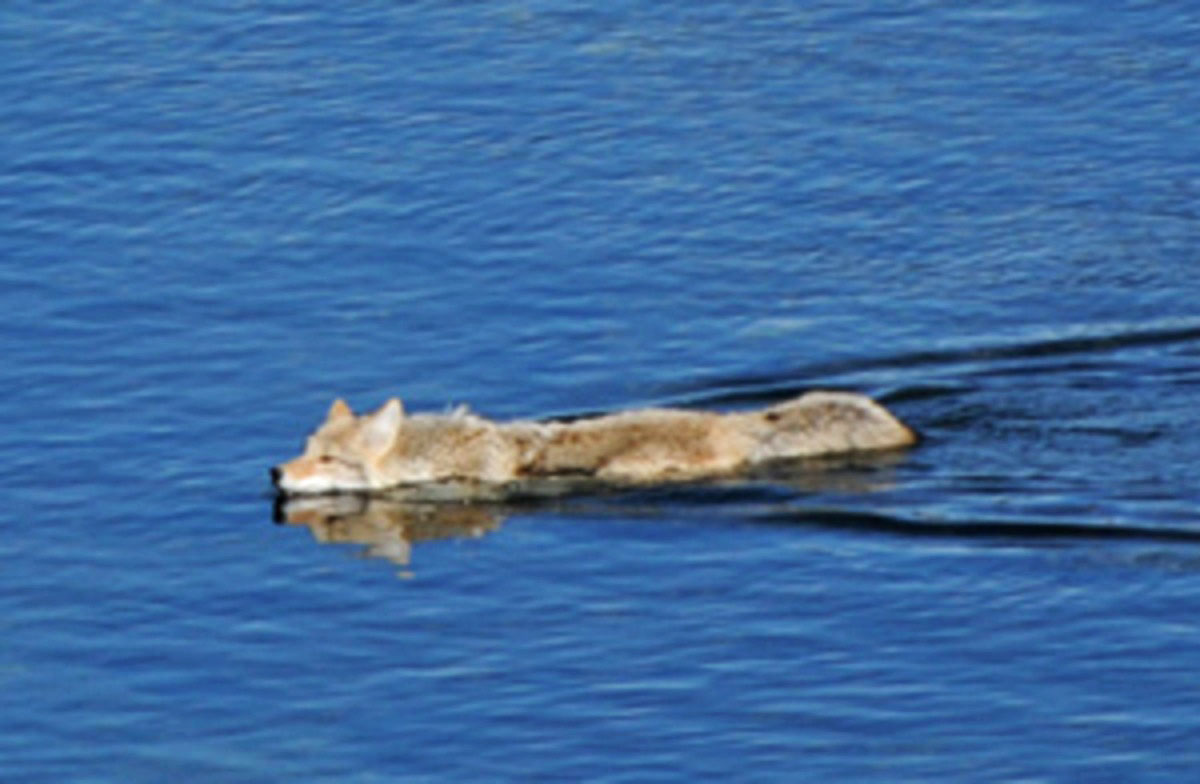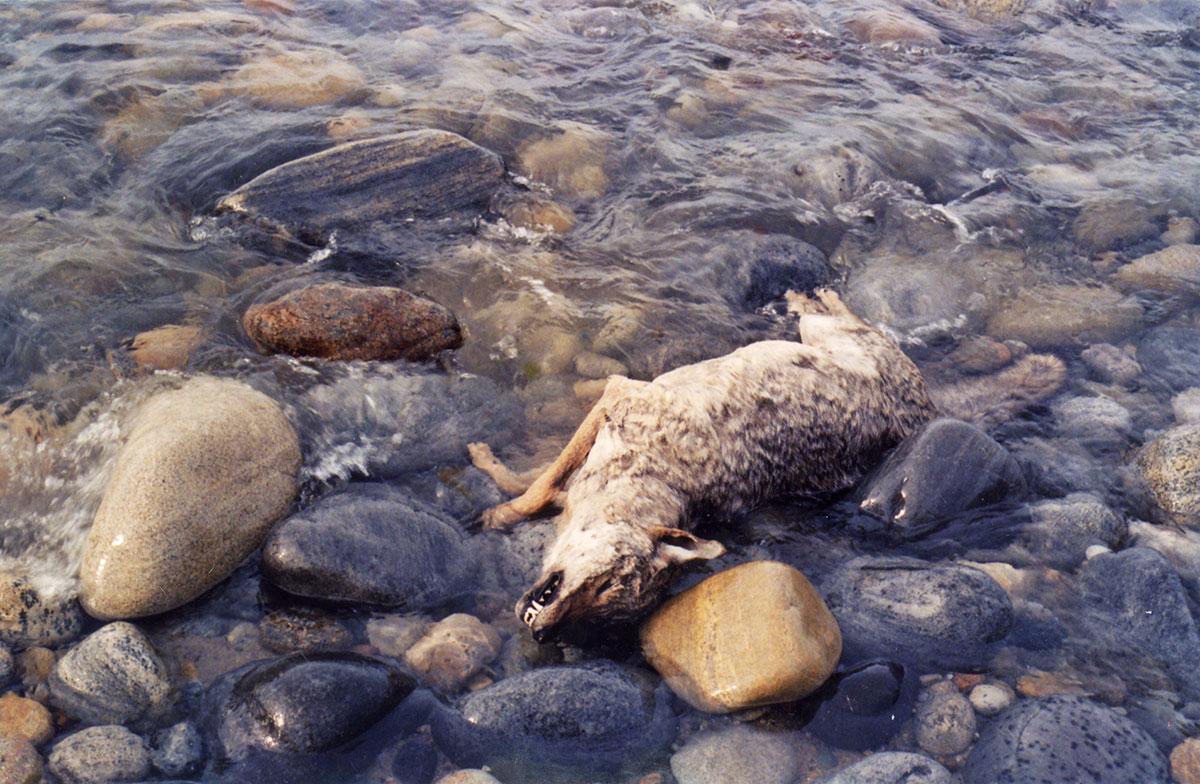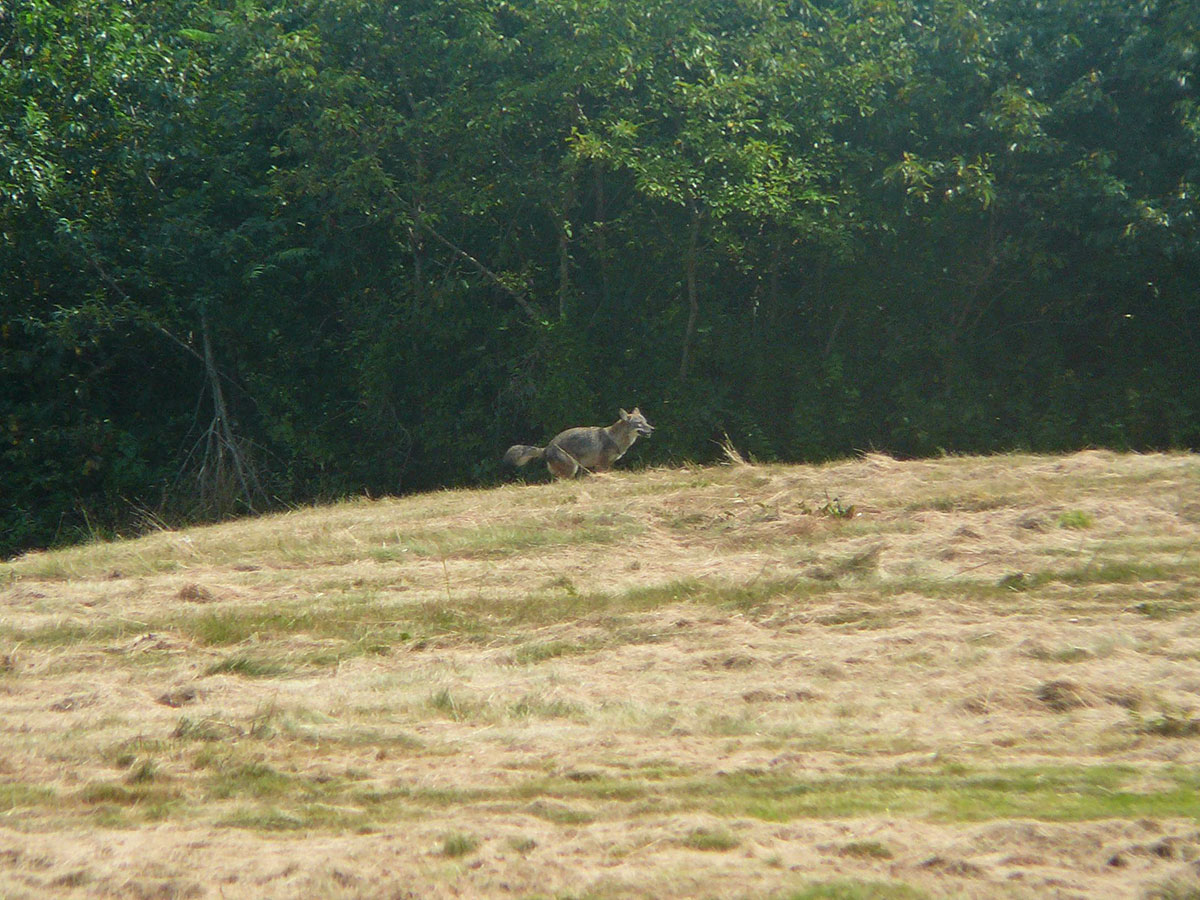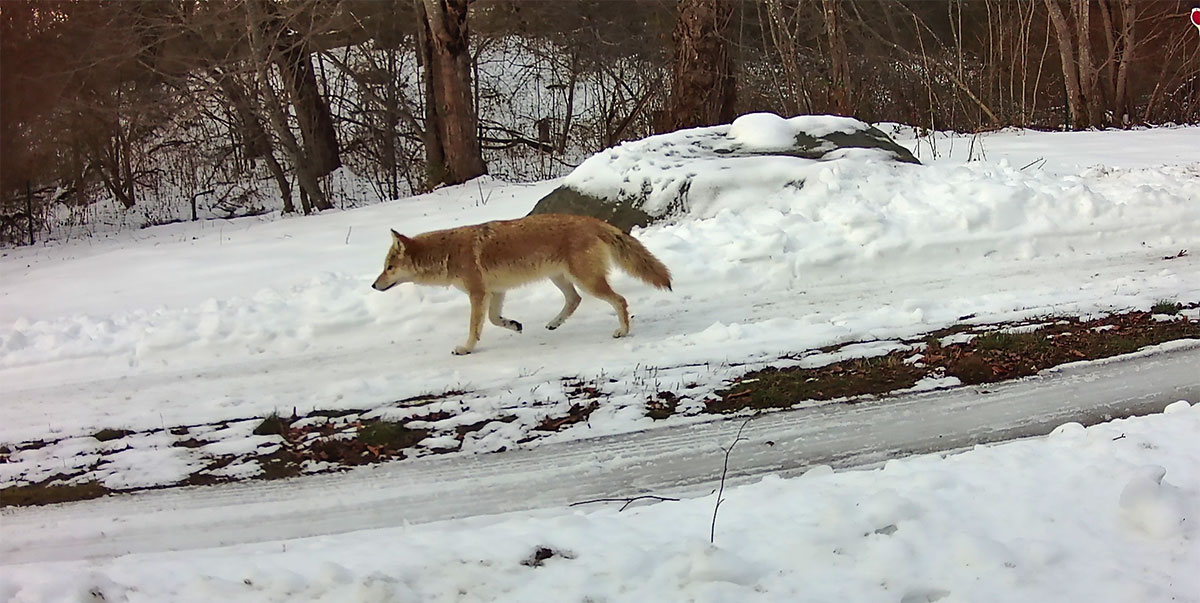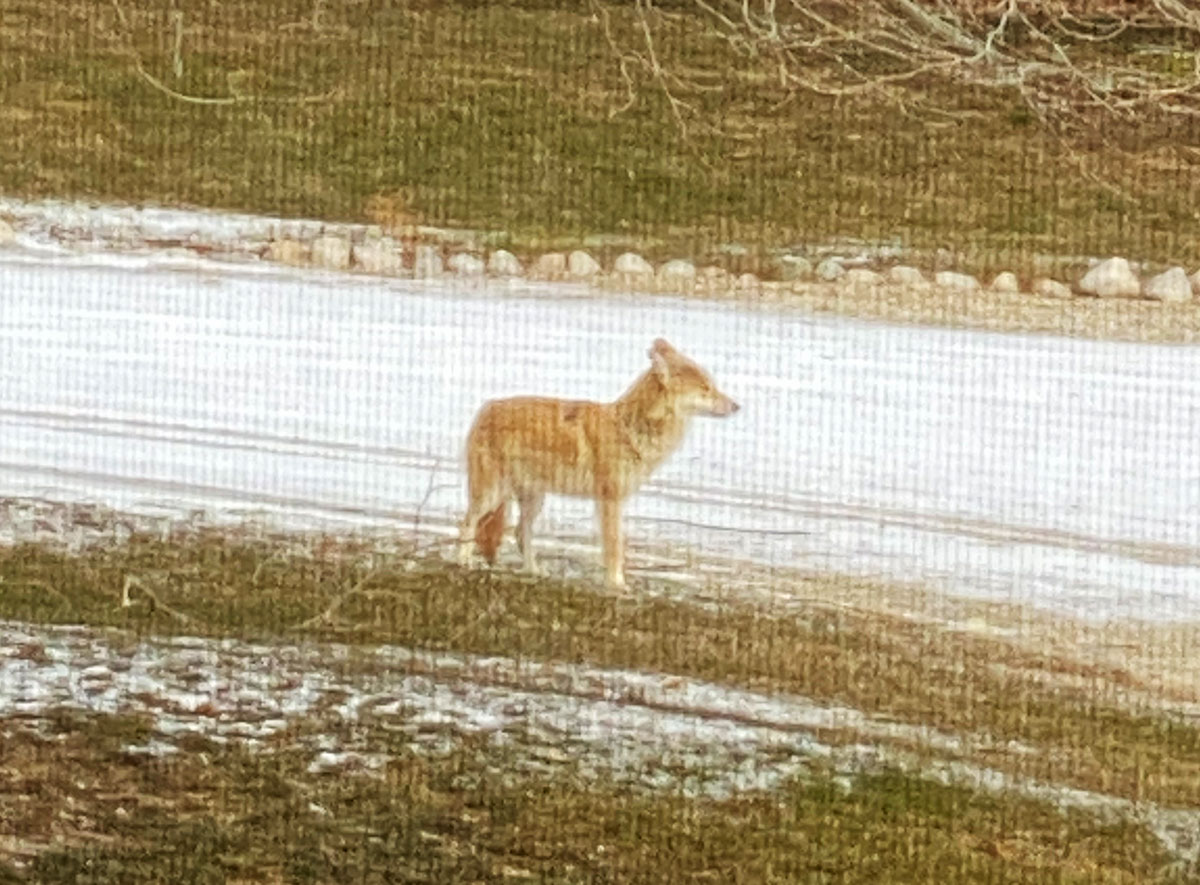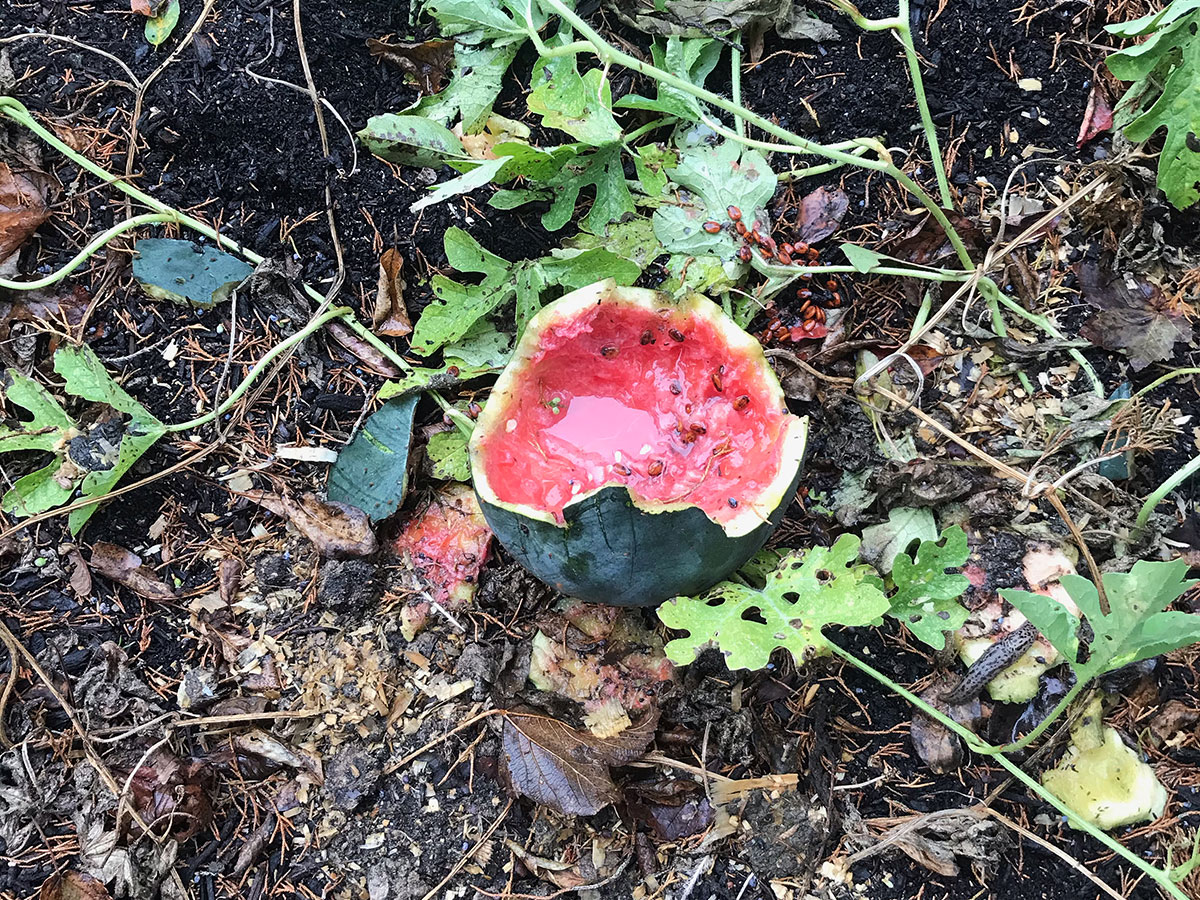ANNUAL EXHIBITION 2021
COYOTES
Coyote swimming in open water
Photograph published with blog, “Coyotes Colonize Fishers Island” by Scottie Westfall, August 13, 2011
Although the location of this photograph is unspecified, the headline it illustrates is crystal clear. Fishers Island was (and is) within range of Coyotes swimming from the Connecticut and Rhode Island mainland.
Coyote running near Barley Field Cove, east end
2009
Photograph by Lynn Foster
The first documented Coyote arrived in 2009. Once a mate arrived (or was already on island), a pack soon formed. Initially, Coyotes were more often heard than seen, their howls triggered by the noon whistle.
Within a few years Fishers Island was astir as pets, especially outdoor cats, started disappearing at a high rate, reportedly 10 within a one week period in 2011. A television crew arrived from the mainland to interview concerned residents and the New York Times wrote up the story for its readers.
Coyote running on Ocean View Ave, west end
December 12, 2020
Photograph by Tracy Brock’s Wildlife Cam
As their numbers increased on island, so did their range, their visibility, and their brazenness. Coyote sightings became a staple of island news and gossip. Although there have been attempts to eradicate them, the historical record indicates that this is a futile and generally counter-productive path to follow. Leaderless packs splinter and create more dangerous replacement packs:
“Why would predation increase after predators are killed? When pack animals such as coyotes, dingoes and wolves are killed, the social structure of their packs break down. Female coyotes become more likely to breed and their pups are more likely to survive, so their numbers may actually increase. Packs generally protect territories, so breaking up a pack allows new animals to come in, raising the population.” Quote from “Why Killing Coyotes Doesn’t Make Livestock Safer” by Megan M. Draheim, Scientific American, The Conversation, May 31, 2017, scientificamerican.com.
Coyote on front lawn as seen through screen door, Ocean View Avenue, west end
January 31,2021
Photograph by Lucinda Herrick
To minimize conflicts with people and pets, the NYS DEC recommends:
- Do not feed coyotes.
- Remove sources of food in your yard including pet food and birdseed.
- Do not allow coyotes to approach people or pets—make loud noises and wave your arms if one comes near.
- Supervise pets while outdoors—do not let them roam free.
On Fishers, if a coyote is exhibiting “bold” or threatening behaviors, call the State Police, or one of the three Fishers Island Constables, Joe Brock, Larry Horn, or Jeff Edwards.
Please keep in mind that Coyotes are not the only threat to small pets on Fishers Island. Minks, Raccoons, Red-tailed Hawks, Great Horned Owls, and, a new arrival, Bald Eagles, are all capable of causing great harm to unsupervised animals, especially at night. The best way forward is to learn how to coexist with nature, not to attempt to conquer it.
Coyote in Dave Denison’s garden on the Hay Harbor Club Golf Course
August 24, 2018
Photographed by Terry McNamara’s Wildlife Cam
After watermelons and other food began disappearing from Dave’s garden near the ninth tee, a Wildlife Cam was set up to “capture” the culprit. Lo and behold, it turned out to be a Coyote!
Coyote eating watermelon in Dave Denison’s HH Golf Course Garden
August 30, 2018
Video by Terry McNamara

